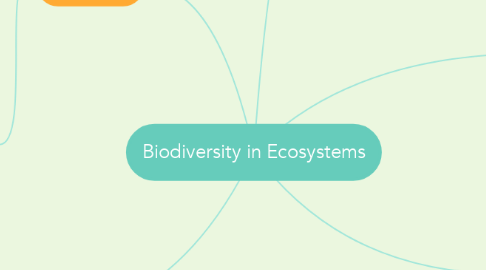
1. Human Effects
1.1. How to Increase Biodiversity
1.1.1. Recycle!
1.1.2. Don't take from nature!
1.1.3. Plant a tree! (or multiple)
1.2. Oceans
1.2.1. No parts of the ocean are untouched by humans.
1.2.2. Coral reefs are the most disturbed part of the ocean by humans.
1.2.3. Only 7% of the oceans are protected.
2. Connectivity
2.1. Food Chains
2.1.1. Plant > Insect > Fish > Larger fish > Seagull > Bacteria
2.1.2. Plant > Caterpillar > Bird
2.1.3. Acorns > Mouse > Snake > Owl
2.1.4. Algae > Small Fish > Large Fish > Dolphin
2.1.5. > Plant > Cricket > Lizard > Eagle > Mushrooms >
2.1.6. > Plankton > Fish > Jellyfish > Turtle > Shark > Bacteria >
2.1.7. Plankton > Mussel > Tiny fish > Large fish > Human
2.2. Although it may not look like it, organisms in ecosystems are are connected to each other, and when one goes extinct or is removed, it can have a negative impact and potentially lead to the ecosystem's downfall.
2.2.1. Similar to Jenga
2.2.1.1. Taking one "brick" or in this case organism, can lead to the collapse of the "structure."
2.2.2. Extinct species
2.2.2.1. Dodo Bird
2.2.2.2. Passenger Pigeons
2.2.2.3. (and many more)
3. Types of Ecosystems
3.1. Tundra
3.2. Grasslands
3.3. Forests
3.4. Desert
3.5. Aquatic
3.6. Cities
3.7. (and more!!)
4. Adaptation
4.1. There's diversity because of adaptation.
4.2. Examples of adaptation
4.2.1. Desert owl hunting at night to avoid heat.
4.2.2. Plants developing larger leaves to adsorb sunlight.
4.2.3. Reptiles using their scales for camouflage.
4.2.4. Kangaroo rat being able to survive on little water.
4.2.5. Bears learning to take shelter in caves.
4.2.6. Birds migrating for warmer weather.
5. Living vs. Non Living
5.1. Interactions
5.1.1. Prairie dog living beneath soil.
5.1.2. Bears taking shelter in caves.
